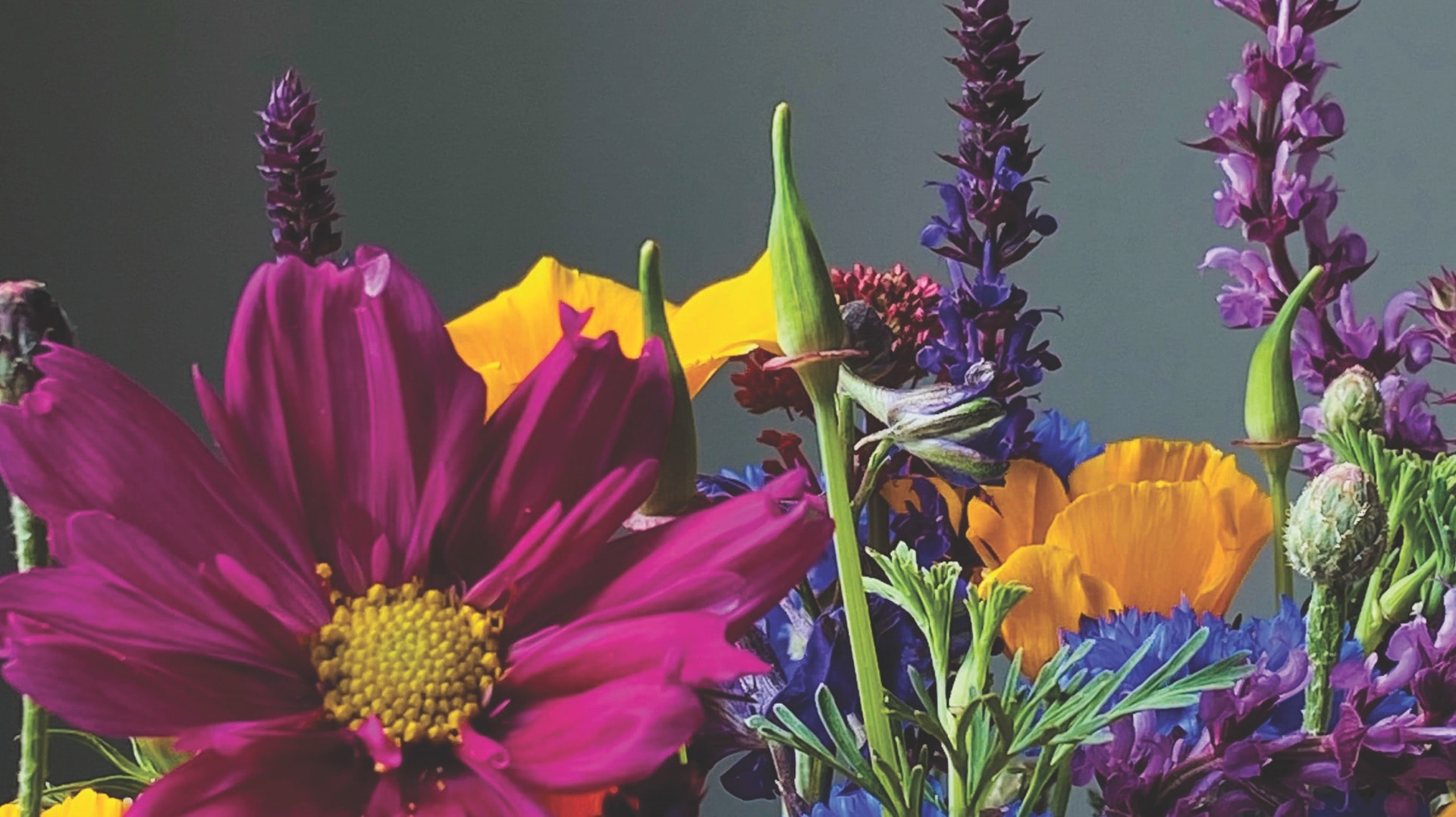
What beautiful flowers!” That has been an often-heard exclamation at church on Sabbaths in the small town of Cross Plains, Tennessee. Although it’s one of the oldest congregations in the state, it enjoys a welcoming and vibrant church family. Every Sabbath the sanctuary is decorated with arrangements done by hand. Each potluck the tables are graced by fresh-cut flowers. This flower ministry is thanks in large part to Pat and Roger Gonzalez, who were in charge of this for many years.
For 21 years Pat and Roger worked together as a team to share the beauty of God’s delicate jewels. Roger grew flowers across the couple’s five-acre property and tended the plants year-round. Pat arranged the flowers into elaborate collages of color for the sanctuary. At potlucks the long tables featured centerpieces of flowers, each in their own vase, lined in a row. Flower arrangements were also made for church members who were ill and for special occasions.
When her homegrown flowers were unavailable, Pat turned to store-bought or artificial flowers for her arrangements. For the Gonzalezes this was more than a hobby; it was a ministry.
“Flowers are an important part of church, and I enjoy decorating with them,” Pat says. She also notes that flower ministry was a blessing not only to those she shared her arrangements with, but to herself as well.
Roger has now fallen asleep in Jesus, but his many beautiful flowering plants continue to bless Pat and her family. She has even discovered some she didn’t know he’d planted. Pat has mostly “retired” from her job as flower artist, but her ministry is carried on by a new generation whom she helped train.
Flowers have been a part of Christian worship for centuries. The art of ornamental flower arranging goes back to the Middle Ages.1 Flowers still hold an important place in both church and personal life. Flower-arranging courses exist to teach the art, but it’s not necessary to take classes in order to start your own flower ministry.
Pat encourages anyone interested to begin by looking at books on the subject. Many local libraries offer books that can help get you started on flower arranging. Numerous helpful online videos can teach you patterns and how to select the best flowers. An article in Ministry2 also has many tips on how to decorate the sanctuary with flowers.
Pat says that if you want to learn more advanced skills or how to grow your own flowers, investigate becoming a master gardener. Many counties have a master gardener program that offers classes.
If you choose to grow some flowers, pick native varieties local to your region. If you want to grow flowers for ministry purposes but feel you don’t have the garden space, don’t give up hope. Discuss with your pastor and church board the possibility of growing them on church property.
Growing your own flowers is rewarding but not necessary in order to bless others with these beautiful plants. Some churches have flower ministry groups that create arrangements specifically to send to church and family members. This activity became especially popular during the pandemic.
Flowers are a great blessing to those who are ill. Studies have shown that arrangements offer more than well-wishes; they make illness more bearable. One study found that patients in a hospital who had plants in their room requested less pain medication, reported less stress and anxiety, and had a more positive view of their recovery. More than 90 percent reported the plants were the most positive feature of the room, even more positive than the TV.3 Another found that patients who had ornamental plants in their room reported that their interactions with hospital staff were more positive throughout their stay compared to those who didn’t have plants.4
Growing up, I marveled at my grandmother’s knowledge of flowers. She could name them while sitting in the car as we drove through the neighborhood. I think she inspired my own love of flowers. I can’t name many flower varieties or arrange live flowers, yet my Instagram profile is full of flower pictures I’ve taken. This is another way to participate in flower ministry. Share your own flower pictures on social media, perhaps accompanied by a Bible verse. That makes a great Sabbath morning post.
Flower ministry can serve in many varied ways. They’re an important part of church sanctuary aesthetic. They remind us that the God who cares for these small plants, which are here today and gone tomorrow, cares so much more for us!
How will you use flowers to bless those around you?
1 https://www.britannica.com/art/floral-decoration/Historical-and-stylistic-developments
2 Louis A. Hansen, “The Ministry of Flowers in Church Service,” Ministry, February 1945, https://www.ministrymagazine.org/archive/1945/02/the-ministry-of-flowers-in-church-service.
3 American Society for Horticultural Science, “Flowering Plants Speed Post-surgery Recovery,” ScienceDaily, Dec. 30, 2008, www.sciencedaily.com/releases/2008/12/081229104700.htm.
4 Seong-Hyun Park and Richard H Mattson, “Ornamental Indoor Plants in Hospital Rooms Enhanced Health Outcomes of Patients Recovering From Surgery,” Journal of Alternative and Complementary Medicine 15, no. 9 (2009): 975-980, doi:10.1089/acm.2009.0075.